|
F2 History
Formula One is generally regarded as the pinnacle of open-wheeled racing but is, always has been, prohibitively expensive. Formula Two has acted as a feeder series and represents the penultimate step on the motorsport ladder. Formula Two (originally known as Formula B) was first set up in 1948 by FIA as a complement to Grand Prix. The engines were smaller and less powerful than those used in Formula One, and the cars were also smaller, lighter and cheaper. This encouraged new marques such as Cooper to set up in F2, rather than compete against teams like Alfa Romeo and Maserati. By 1967 Formula Two was dominated by F1 stars on their "off-days". Engines were mostly by Cosworth (based on Ford blocks) and Honda, BMC, Fiat and BRM featured as well. With the "return to power" of F1, the gap between the series had grown too great and a change was needed. The 1.6 litre era, and driver grading (1967-1971) For 1967, the FIA increased the maximum engine capacity to 1600cc and introduced the European F2 Championship. Jacky Ickx, driving a Matra MS5, won the first championship by 11 points from the Australian, Frank Gardner. The most popular engine was the Cosworth FVA which was effectively the "proof of concept" for the legendary DFV. The 1967 FVA gave 220 bhp @ 9,000 rpm. Other units included a four-cylinder BMW and a V6 Dino Ferrari. Many Formula One drivers continued to drive the smaller and lighter cars on non-championship weekends. F1 drivers could drive in F2 because of a grading system. Any driver with an "A" grading was not permitted to score championship points which permitted less experienced drivers to work towards the championship and forward their careers, while allowing senior drivers to keep their hand during breaks between Grands Prix. Some Grand Prix grids (notably at the Nürburgring) would be a mix of F1 and F2 cars. Ickx made his Grand Prix debut there in a Formula Two car, qualifying with the fifth fastest time overall. 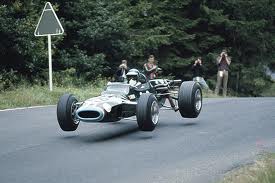
Brabham and Lotus were the most common cars, although Ferrari entered a works team, as did BMW (with a Lola built chassis). A number of smaller construtors such as Matra and Tecno where also successful. The French firm Matra won the three first editions of the European championship. If you
want to know more about the teams modelled in this release and the cars
they used, click on any of the team names on the left.
|
||
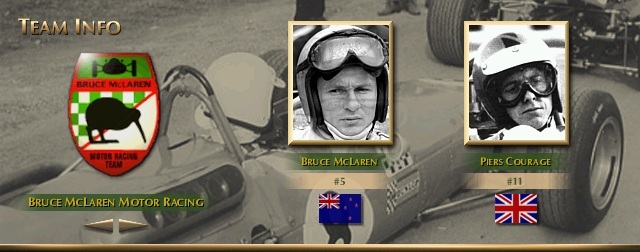
|
||
|
BRUCE McLAREN MOTOR RACING |
||
|
Bruce McLaren was a New Zealand driver whose eponymous team would go on
to massive glory in Formula 1. In 1967 the team was only four years old
and the Formula 2 season was very much used as a testing ground whilst
the team focused on Formula 1 |
||
|
MCLAREN M4A FVA 
|
||

|
||
|
THE TYRELL RACING ORGANISATION |
||
|
The Tyrrell Racing Organisation was founded by Ken Tyrrell and started
racing in 1958. The team had some success in F2 in 1967 winning three
races at Zandvoort, Enna (which you can try!) and Vallelunga. Its
experience in Formula 2 allowed it to start building its own cars in
1970. The team subsequently won three drivers' championships and one
constructors' championship in F1 with Jackie Stewart |
||
|
MATRA MS7 FVA 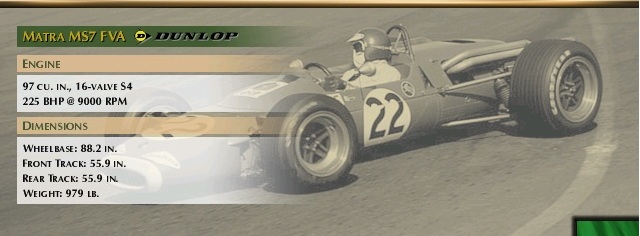
|
||
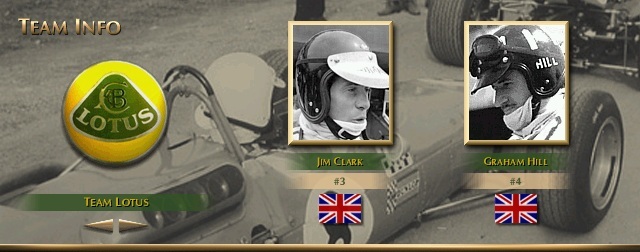
|
||
|
TEAM LOTUS |
||
|
Possibly the most famous of all Racing teams. Formed by Colin Chapman,
Lotus had huge success with some of the greatest names in Formula
racing - Jim Clarke, Graham Hill and Jackie Stewart, to name but three.
Jim Clark actually won the sixth round of the 1967 F2 Championship at
Jarama but was ineligible to score points as a graded driver. They used
the classic Lotus 49 for the 1967 F2 season. |
||
|
LOTUS 48 FVA 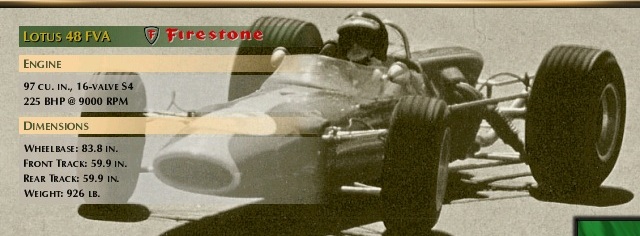
|
||

|
||
|
MATRA SPORTS |
||
|
Mécanique Aviation Traction or Matra was a French team that had great
success in all forms of junior Formula racing in the mid 1960's.
Although Matra did not win a round of the 197 F2 Championship, they did
win the last non-Championship race of the season at Jarama. Also in
1967, Jacky Ickx famously amazed the F1 establishment by clocking in
the 3rd-fastest qualifying time of 8:14" on the German Nürburgring in
his 1600 cc MS5 F2 |
||
|
MATRA MS5 FVA 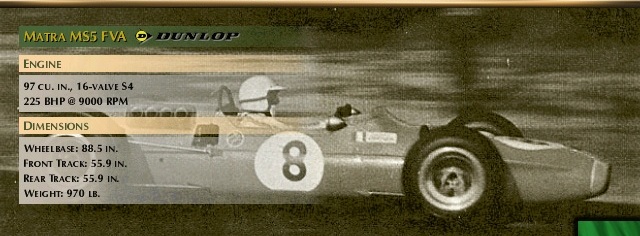
|
||
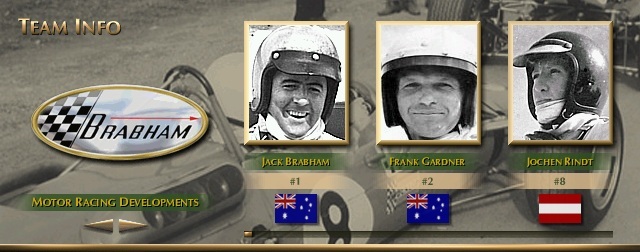
|
||
|
MOTOR RACING DEVELOPMENTS |
||
|
MRD was extremely successful in 1966, winning 11 consecutive Formula
Two races. The changes for the 1967 season meant that they won only one
Championship race - Hockenheim - Frank Gardner bring home the BT23.
Cars were entered by MRD and not by the Brabham Racing Organisation,
avoiding a direct conflict with Repco, their Formula One engine
supplier. |
||
|
BRABHAM BT23 FVA 
|
||

|
||
|
LOLA CARS Ltd |
||
|
Lola was founded in 1958 by Eric Broadley and based in Huntingdon,
England. After their limited success in the 1960s with Formula One,
Lola turned its attentions primarily to sports cars but also to Formula
Two, where Lola became the works team for BMW. Although they had
limited success early on the company went on to become one of the most
successful chassis producers in the world. |
||
|
LOLA T100 FVA 
|
||

|
||
|
LOLA CARS Ltd |
||
|
Lola was founded in 1958 by Eric Broadley and based in Huntingdon,
England. After their limited success in the 1960s with Formula One,
Lola turned its attentions primarily to sports cars but also to Formula
Two, where Lola became the works team for BMW. Although they had
limited success early on the company went on to become one of the most
successful chassis producers in the world. |
||
|
LOLA T100 BMW 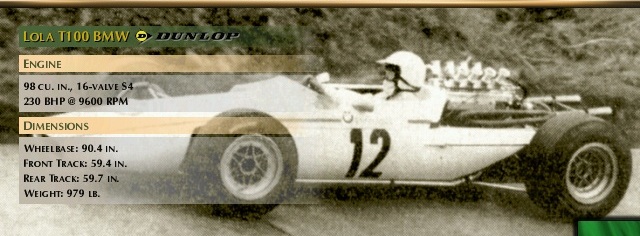
|
||
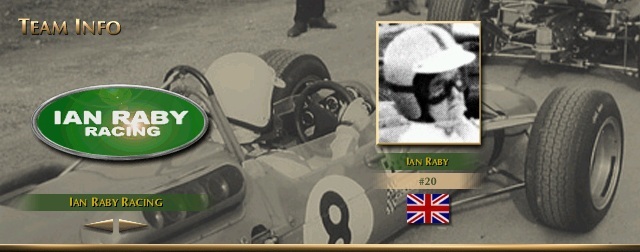
|
||
|
IAN RABY RACING |
||
|
As Formula One switched to 3-litres for 1966 Ian Raby opted to race in
Formula Two. His F2 Brabham produced an eighth place at Snetterton and
another eighth place at Hockenheim in a non-championship race. Back at
Hockenheim on July 9, Raby managed a fifth place against his more
powerful rivals. On July 30, 1967, Ian Raby crashed his Brabham in the
Zandvoort Trophy (Grote Prijs van Zandvoort) F2 race and was fatally
injured, dying on November 7. |
||
|
BRABHAM BT14 LF 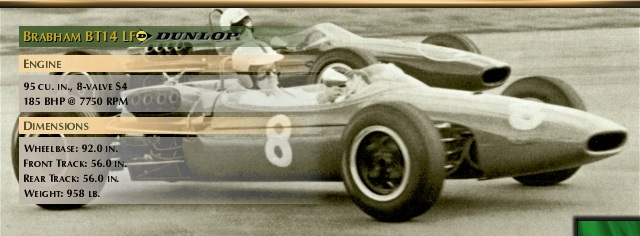
|
||

|
||
|
TEAM COMPONENTS |
||
|
A Lotus junior team. The team was part of the overall Lotus group and
was largely used as a test bed. In 1967, the team ran the older Lotus
41 and did not bother the scorers in the Championship |
||
|
LOTUS 41B FVA 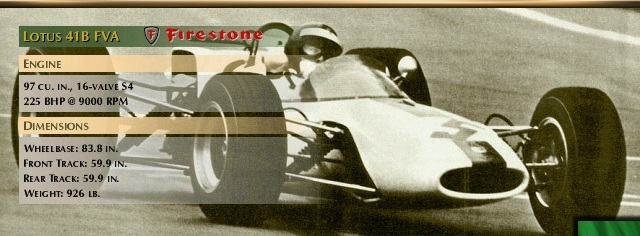
|
||
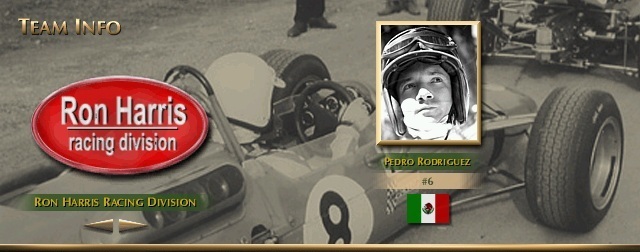
|
||
|
RON HARRIS RACING DIVISION |
||
|
Although not the most successful team in Formula 2 the Ron Harris
Racing Division was notable for having probably the oddest looking open
cockpit single seater ever to race at the highest level. The Protos
design was an attempt to introduce better aerodynamics but ultimately,
the idea was unsuccsessful, if interesting. The slippery aerodynamic design was by Frank Costin, with an almost-enclosed 'bubble' canopy over the cockpit and a chassis partially made of the very light but fragile plywood. Although fairly quick on fast tracks, it didn't become a front runner and did not score wins during the European F2 season. |
||
|
PROTOS 16 FVA 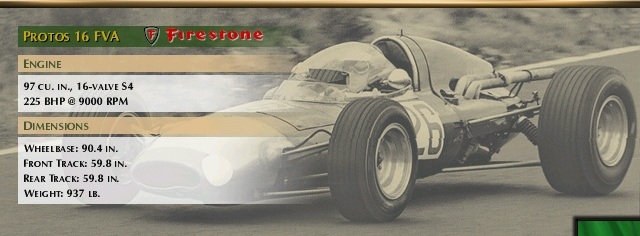
|
||

|
||
|
SCUDERIA FERRARI SpA |
||
|
Ferrari - the most famous racing margue in the world. The oldest active
team in F1 and the most successful. No more to be said |
||
|
FERRARI 166 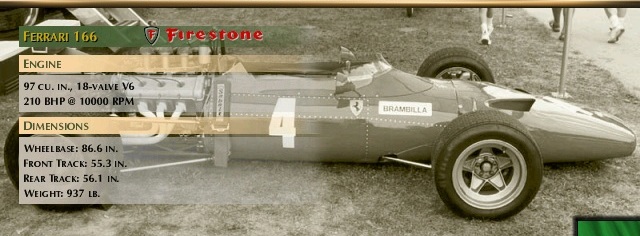
|
||
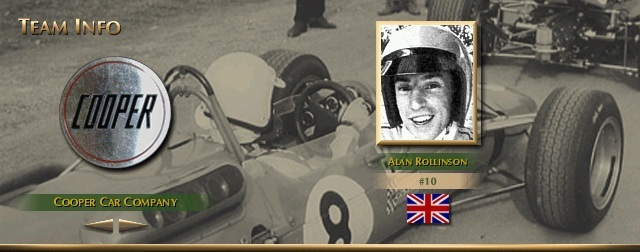
|
||
|
THE COOPER CAR COMPANY |
||
|
The Cooper Car Company was founded in 1946 by Charles Cooper and his
son John Cooper. Together with John's boyhood friend, Eric Brandon,
they began by building racing cars in Charles' small garage in
Surbiton, Surrey, England in 1946. Through the 1950s and early 1960s,
they reached auto racing's highest levels as their rear-engined,
single-seat cars altered the face of Formula One and the Indianapolis
500, and their Mini Cooper dominated Rally racing. |
||
|
COOPER T84 FVA 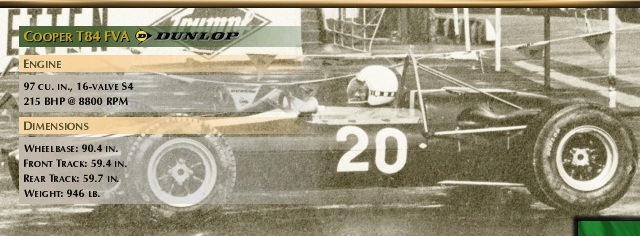
|
||